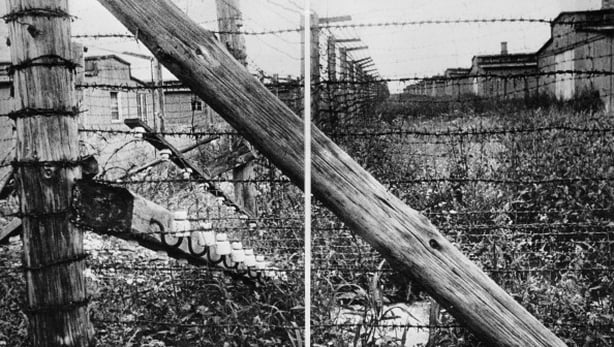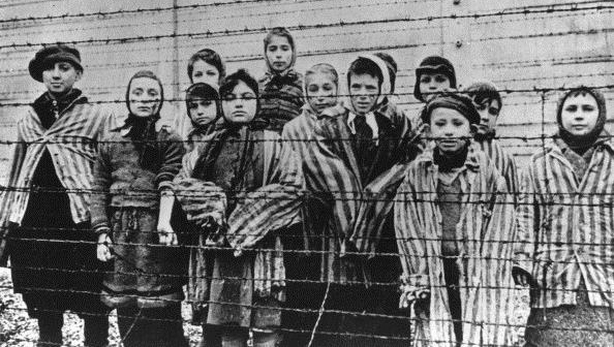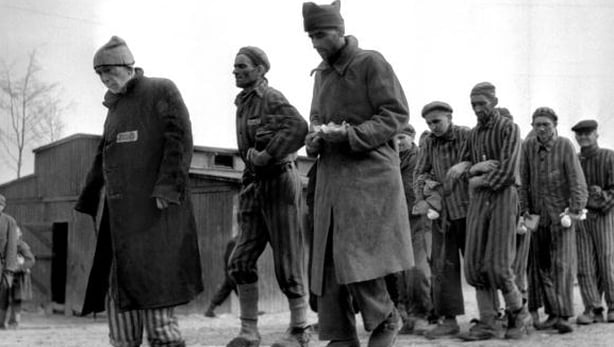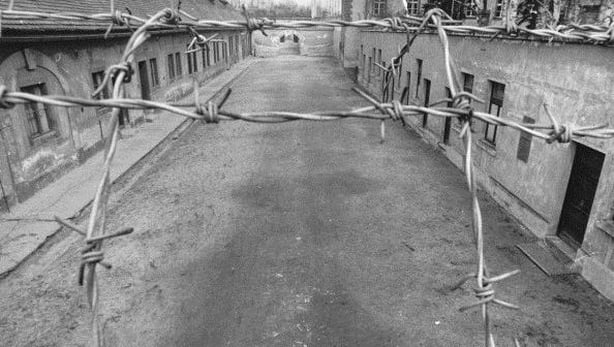The liberation of the Nazi concentration and death camps came as World War II drew to a close as allied forces advanced on Berlin.
The Soviet Red Army moved quickly from the east. US and British troops and other allies closed in from the west.
There is, however, a distinction between the actual "liberation" of the camps and the "evacuations".
It was a complex process under which in the last year of World War II the Nazis transferred prisoners from camp to camp in what is known as the "death marches" in a bid to cover up their atrocities.
Timeline of the evacuation of the Nazi camps
1944
24 July: The Majdanek camp near the eastern Polish city of Lublin becomes the first camp to be liberated, by the Soviet army.
A few days earlier the Nazis had evacuated most of its prisoners to Auschwitz.
 An electric fence surrounds the Majdanek camp
An electric fence surrounds the Majdanek camp
2 September: The evacuation starts at Natzweiler-Struthof-Alsace, the only concentration camp on what is today French soil. Its inmates are transferred to the Dachau camp in Germany.
23 November: Liberation of Natzweiler-Struthof-Alsace by the American army.
1945
20 January: The liberation of Plaszow camp in the suburbs of Krakow, Poland, by the Red Army. Earlier in the month, the prisoners had been evacuated to Auschwitz.
17-19 January: Some 60,000 prisoners are evacuated from Auschwitz and annexed camps near Krakow.
25 January: The evacuation of Stutthof, 35km from Gdansk, which was known as Danzig.
27 January: The liberation of Auschwitz-Birkenau by the Red Army. Only 7,000 inmates are still at the site, unable to walk.
 Survivors of Auschwitz after the liberation of the camp
Survivors of Auschwitz after the liberation of the camp
28 February: The liberation of Gross-Rosen, in present-day Poland, by the Red Army.
4 April: The evacuation starts of Buchenwald camp near to Weimar in Germany. One of the biggest concentration camps, thousands of prisoners from Auschwitz and Gross-Rosen had been transferred there.
11 April: The clandestine resistance at Buchenwald, run by the German communists, takes control of the camp several hours before the arrival of US tanks. Liberation at the same time at nearby Dora camp by US troops.
 Weak and sick survivors of the Nazi concentration camp in Buchenwald after the liberation of the camp
Weak and sick survivors of the Nazi concentration camp in Buchenwald after the liberation of the camp
15 April: The liberation of Bergen-Belsen in north-western Germany by the British Army.
22-23 April: The liberation of Sachsenhausen to the north of Berlin by the Red Army.
23 April: Liberation of Flossenbuerg camp in Bavaria by US troops.
23 April: Start of the evacuation of Ravensbrueck, 80 km to the north of Berlin.
29 April: Liberation by US troops of Dachau near Munich, the first concentration camp opened in 1933 by the Nazis.
30 April: The liberation of Ravensbrueck - a camp reserved mainly for women - by the Red Army.
 Women wait to be released from camp Ravensbrueck
Women wait to be released from camp Ravensbrueck
5 May: The liberation of Mauthausen, Austria, one of the biggest work camps, by the US Army.
5 May: Liberation of the Neuengamme camp near Hamburg in Germany by British troops. The camp is empty and the traces of atrocities covered up.
6 May: Liberation of the camp of Ebensee, an annex of Mauthausen, by the US Army.
8-9 May: The liberation of Theresienstadt in today's Czech Republic by the Red Army. On 3 May control of the camp had been transferred to the Red Cross.
 The courtyard of the Theresienstadt concentration camp
The courtyard of the Theresienstadt concentration camp
8-9 May: Germany capitulates unconditionally and the war in Europe ends.

